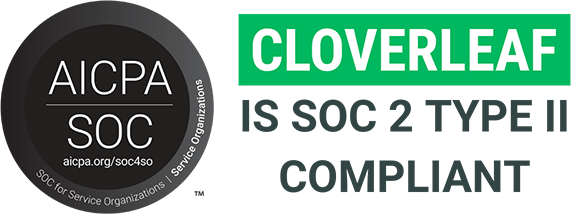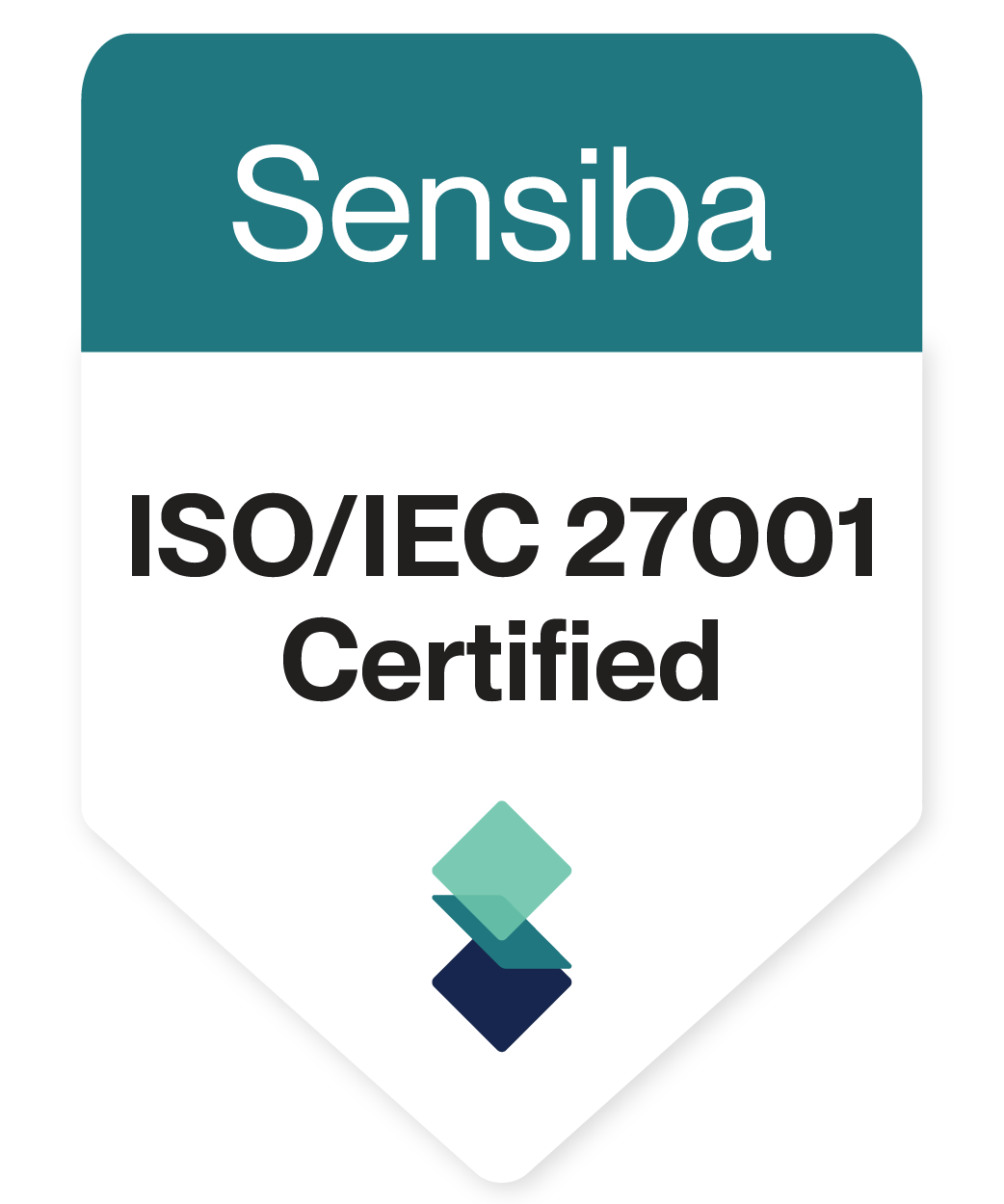Think about the kind of workplace where managers do more than just check off tasks and meet deadlines. You need people who lead—where they inspire, connect, and motivate their teams to do their best work every day. Getting to this point isn’t easy. The magic lies in those often overlooked but crucial human skills.
Emotional intelligence (EQ), active listening, and empathy aren’t just “nice-to-haves.” They’re the real tools that help managers handle the daily grind—whether it’s resolving conflicts, guiding teams through change, or keeping collaboration strong, even when the pressure is on.
How do you make these human skills second nature for your managers? How do you help equip managers with these “soft” skills to deliver hard-hitting results that everyone can see and measure? Talent develop leaders have a solid grasp on why these skills matter—now it’s time to dive deeper and explore how to embed them so deeply in your team’s DNA that they become the bedrock of your organization’s success.

The 5 Human Skills For Managers That Are Most Needed Today
The pressure on managers is immense. They’re not just expected to drive results—they need to inspire, connect, and lead with empathy. But as you know, not all skills are created equal. While technical expertise and strategic thinking are critical, they only go so far. Human skills are the real differentiators that turn a good manager into a great leader.
But with so many demands on their time, which human skills should managers first focus on developing to truly make an impact? Let’s break down the five human skills that matter most today—and why they should be at the top of your priority list.
1. Building Trust
Trust isn’t just important—it’s essential. Research by Paul Zak from the Harvard Business Review shows that high-trust organizations are more productive, with 74% less stress, 50% higher productivity, and significantly more energy at work. Managers who are authentic and open create an environment where team members feel safe to share ideas and take risks, which is crucial for fostering innovation.
2. Resolving Conflicts
The inability for managers to effectively navigate conflict and bring about positive resolution is costing them nearly one full day of productivity per month, or two and a half weeks per year. – Dr. Robyn Short Conflicts that aren’t resolved quickly disrupt team dynamics, lower morale, and lead to significant productivity losses. However, managers who are skilled in emotional intelligence and active listening can defuse conflicts before they escalate, ensuring that their teams remain focused and unified.
3. Navigating Change
Leading through change and uncertainty is one of the most challenging aspects of management. A study by Gartner found that only 34% of change initiatives are a clear success, with employee resistance cited as a primary reason for failure. Managers who excel in communication, directly address concerns, and lead by example can significantly reduce resistance and improve the success rate of change initiatives.
4. Improving Team Collaboration
In diverse teams, differences in perspectives and backgrounds can drive innovation or lead to miscommunication and conflict. Teams with higher cognitive diversity—where members have different ways of thinking—are more innovative and better at problem-solving, particularly in complex and uncertain environments. Managers who value and leverage these diverse perspectives can create an environment where collaboration flourishes, turning potential friction into creative solutions and growth opportunities.
5. Managing Stress and Burnout
Stress and burnout are more than just buzzwords—they’re real threats to productivity and well-being. The World Health Organization (WHO) has officially recognized burnout as an occupational phenomenon, linking it to decreased productivity, higher turnover, and absenteeism. Managers who can practice resilience and emotional regulation can manage their stress and recognize early signs of burnout in their teams to take steps to address it before it becomes a bigger issue.
Knowing the importance of these human skills is one thing, but developing them into the daily fabric of your team’s work is another challenge altogether. It’s easy to feel like you’re doing everything you can yet still falling short of making these skills stick.
But here’s the good news:
you don’t have to tackle this alone, and it’s not about adding more to your plate. It’s about making small, intentional shifts that can lead to big changes. To do so, you must first understand the blockers preventing a stronger, more resilient, and more connected team.

Ready To Build Human Skills At Scale With Your Managers?
- Close the gap between learning and on-the-job application
- Personalize growth to individual strengths and needs
- Integrate learning so it is actually in the flow of work
- Develop human skills fast enough to solve business problems
- Prove the ROI of your development programs

4 Roadblocks That Get In The Way Of Developing Human Skills
When it comes to developing human skills in the workplace, it can often feel like trying to squeeze one more thing into an already packed schedule. Managers constantly juggle a multitude of tasks, leaving little time for focused development efforts. For Talent Development Leaders, the challenge is twofold: not only do they need to find ways to integrate these crucial skills into the daily grind, but they also have to overcome several significant obstacles that can derail even the best-intentioned efforts.
1. Time Constraints
Managers are often stretched thin, with daily responsibilities that leave little room for anything beyond immediate tasks. The pressure to deliver results can make skill development feel like a luxury rather than a necessity. This perception is compounded by the belief that time spent on development activities detracts from “real work.” However, this mindset overlooks the long-term benefits of human skills development, which can actually lead to more efficient and effective teams.
2. Limited Resources
The struggle for resources is a common issue, especially when it comes to intangible assets like human skills. Whether it’s a lack of budget, tools, or access to skilled facilitators, Talent Development Leaders often find themselves fighting an uphill battle. In many organizations, leadership may not fully grasp the return on investment (ROI) that human skills development can provide, leading to underfunding or underutilization of available resources. This can be particularly frustrating when there’s clear evidence that organizations with robust human skills training see significant improvements in employee engagement and retention.
3. Resistance to Change
Change is never easy, and when it comes to human skills development, resistance can be especially strong. Managers may be skeptical about the value of such training or uncomfortable with the idea of altering established behaviors. This resistance is often exacerbated by a lack of organizational buy-in, making it difficult to foster a culture that prioritizes continuous development.
4. Difficulty Measuring Impact
One of the most significant challenges in human skills development is proving its effectiveness. Traditional metrics, such as surveys, often fail to capture the full impact these skills have on organizational performance. This can make it difficult to justify continued investment in these programs. However, innovative approaches to measurement are emerging. For example, some organizations are using data analytics to track behavioral changes over time and correlate them with key performance indicators (KPIs).
Quantifying improvements in collaboration, problem-solving, and leadership skills draws a direct line between individual development and tangible business outcomes. This approach transcends traditional sentiment surveys to paint a more accurate picture of Talent Development’s value.
It’s clear that developing the human skills of managers has it’s challenges, but these obstacles aren’t insurmountable. The role of talent development is crucial in breaking down these barriers, challenging old models, and embedding these skills into the daily practices of your managers. The next step is to move beyond recognizing these roadblocks and to actively implement strategies that drive real change. In the following section, we’ll dive into advanced strategies that are specifically designed to overcome these challenges and elevate human skills within your organization.
4 Advanced Strategies To Empower Managers To Develop Human Skills
Developing emotional intelligence (EQ) and empathy in leaders is not something that is achieved through a single training session. It requires a deliberate, multi-faceted approach that goes beyond traditional learning methods. To truly cultivate these critical human skills, you need strategies that are both targeted and practical, focusing on self-awareness, social awareness, and the consistent application of these skills in real-world settings. Here are some advanced techniques that can enhance or build upon existing development programs:
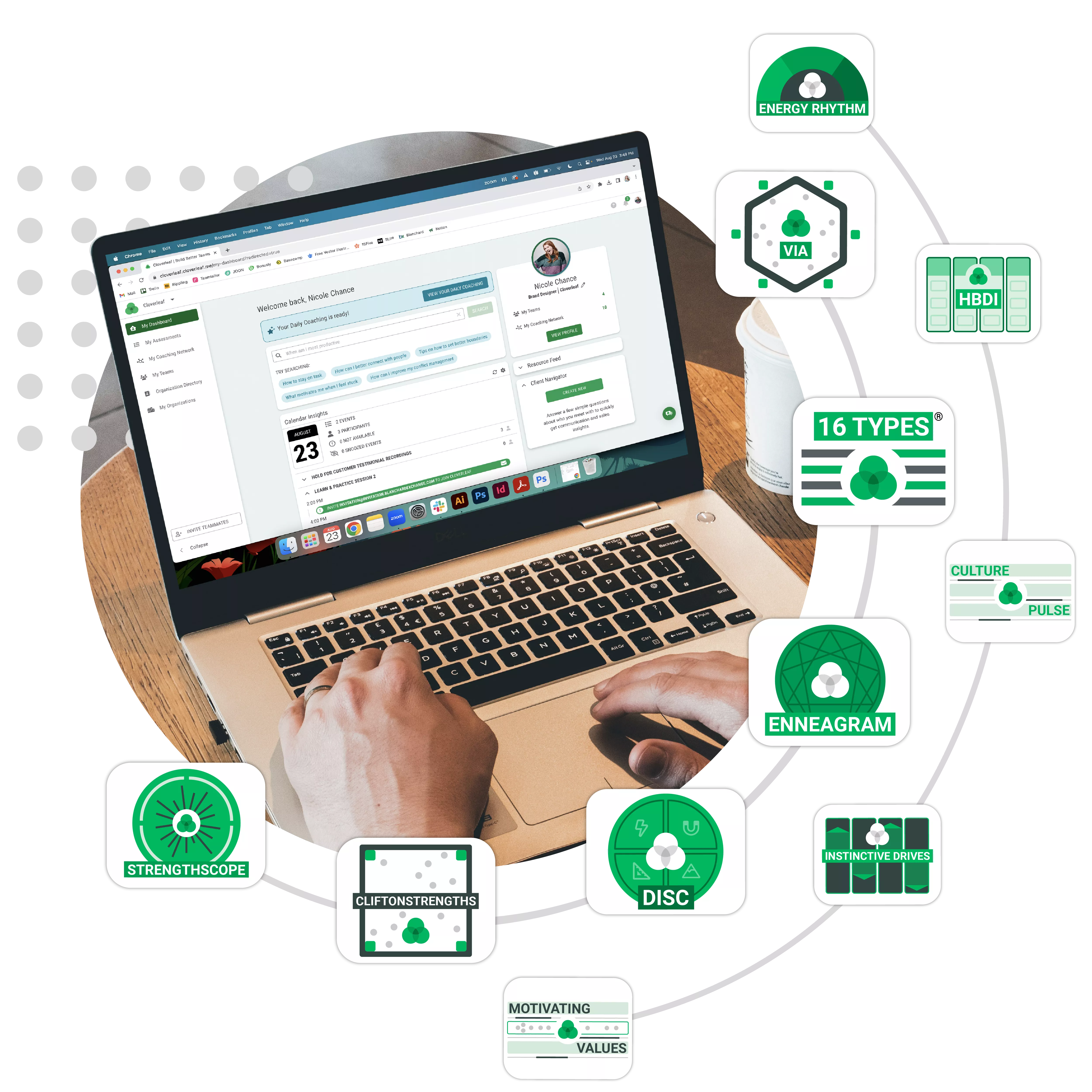
1. Self-Assessment Tools
For managers assessments like DISC, 16 Types, and the Enneagram are invaluable not just for identifying personality traits but for applying these insights to navigate the complex dynamics of leadership. When managers understand both their own tendencies and those of their team members, they can adapt their leadership approach to meet individual needs, handling tricky situations with greater finesse and effectiveness.
By integrating these tools into daily leadership practices, managers gain deeper insights into their team members’ motivations and communication styles, allowing them to tailor interactions and model a more inclusive and high-performing work environment. This nuanced approach can improve team dynamics and position leaders to better manage change, resolve conflicts, and drive innovation.
2. Dedicated Team Development Time
The challenge lies not in convincing managers to invest time in development but in maximizing the impact of that time. Consider restructuring development time to focus on real-time team challenges rather than abstract exercises. Use these sessions to simulate high-pressure scenarios that mirror your team’s daily struggles, allowing leaders to practice emotional intelligence in a controlled environment.
A study by the Kenexa Research Institute discovered that 50% of positive changes in communication can be attributed to social interactions outside of work-related matters, which include team building activities. This approach can help deepen their empathy and social awareness. It can also provide immediate, applicable insights they can carry back into their daily interactions.
3. Continuous Feedback and Peer Learning
To truly elevate the effectiveness of feedback, integrate it with peer learning in a way that challenges conventional thinking. Instead of standard feedback loops, create cross-functional peer coaching partnerships where managers can offer fresh perspectives on each other’s challenges. This method encourages out-of-the-box thinking and exposes managers to diverse leadership styles and problem-solving approaches.
4. Real-Time Behavioral Nudges
Technology can play a pivotal role in reinforcing emotional intelligence throughout the workday. Tools like Automated Coaching™ deliver micro-nudges—small, personalized reminders that prompt managers to apply their emotional intelligence skills in real time. These nudges are contextual and tailored to specific situations, helping managers practice empathy and emotional regulation exactly when it’s needed most.

How to Build Human Skills for Managers at Scale with Technology
Talent Development Leaders face the challenge of not just training managers, but truly transforming them—equipping them with the human skills necessary to lead effectively in an ever-evolving environment. This requires more than periodic workshops or role-based training programs. It demands a personalized, continuous, integrated approach that meets managers where they are and when they need it most.
Automated Coaching™ does exactly that. It redefines what’s possible in leadership development by embedding real-time, personalized coaching directly into the daily workflow. This isn’t about abstract theories or broad-brush training; it’s about delivering specific, actionable insights tailored to the unique challenges each manager faces.
Whether it’s navigating a difficult conversation, giving feedback, or leading through change, Automated Coaching™ provides the right guidance at the right moment, seamlessly integrated into the tools managers already use. This approach ensures that learning is not only relevant but also immediately applicable, making growth a continuous, natural part of a manager’s daily experience.
Integrating these micro-coaching moments into tools like calendars and email ensures that learning happens in the context of actual work, making it more relevant and impactful. Automated Coaching™ empowers leaders to customize and adjust the their approach tomeet evolving needs and unique needs of each person on their team.
Relevant Data & Trends in Human Skills Development
A recent report by McKinsey on workplace productivity underscored the importance of people leaders who are well-connected to their teams. These leaders play a pivotal role in maintaining morale and engagement by ensuring that employees feel valued and that their career paths are clear. The report suggested that organizations focusing on human skill development, particularly in leadership, saw better team dynamics and a reduction in disengagement, which directly correlated with improved productivity.
As we look ahead, several trends are shaping the future of human skills development, offering new opportunities for organizations to focus on this critical area. While many Talent Development may be overwhelmed by AI being a central topic in just about every conference session related to human capital management, we can’t avoid it. Here are a few other trends to consider, some which include AI:
a. Personalization: The move towards personalized learning experiences is not just a trend—it’s becoming a necessity. AI and data analytics are enabling organizations to tailor training, coaching and development programs to the individual needs, learning styles, and career goals of employees. This level of personalization ensures that content is not only relevant but also impactful, leading to more effective skill acquisition and application.
b. Digital Experiences in The Flow of Work: As the workplace becomes increasingly digital, leveraging technology that provides development in the flow of work without disruption is becoming increasingly attractive. The more technology can fuel development in ways that are not stressful to employees but actually delightful, the easier it will be to get buy-in for participation. (And yes, AI will be at work here too!)
c. Leadership Development Emphasis: Leadership development will continue to be a critical area of focus, particularly as organizations navigate the complexities of hybrid and remote work environments. Future leaders will need to be equipped with advanced human skills, including emotional intelligence, adaptability, and the ability to inspire and engage distributed teams. Talent Development Leaders must follow this trend by shifting how we promote and hire for leadership roles and include these critical skills within job descriptions.
d. Community Learning & Collaboration: The rise of learning platforms and collaborative tools will transform how human skills training is delivered. Peer-to-peer learning, mentorship, and collaborative projects will be integral to talent development strategies. Tools that invite more frequent and effective collaboration will become the secret weapon for Talent Development Leaders.
The future of human skills development is being shaped by personalization, technology integration, and a renewed focus on leadership in a hybrid world. As these trends continue to evolve, organizations that embrace them will be better positioned to cultivate leaders who are not only effective but also deeply connected with their teams. Talent Development Leaders who recognize and act on these trends will drive the next generation of leadership, ensuring that their organizations thrive in an increasingly complex and dynamic environment.
Embracing Continuous Growth
Human skills are not just a fleeting trend—they are the bedrock of a thriving, resilient workforce. As the workplace continues to evolve, the ability to leverage emotional intelligence, effective communication, and seamless collaboration will be the key to forming teams that are not only productive but also engaged and adaptive. However, developing these skills demands more than traditional approaches; it calls for innovation, sustained commitment, and the right resources. Here’s how you can take action to ensure your teams are equipped for continuous growth:
1. Critically Assess Your Current Programs
Take a hard look at your existing learning, training, and coaching initiatives. Are they truly fostering the human skills that your teams need to excel? Move beyond surface-level metrics and dig deep into what’s working and what isn’t. It’s time to reimagine your development strategies to drive real, meaningful growth. This isn’t just about checking a box—it’s about transforming your workforce to meet the demands of today and tomorrow.
2. Future-Proof Your Workforce
Don’t just focus on the challenges your teams face today; anticipate what’s coming next. Identify the learning gaps within your organization by gathering comprehensive qualitative and quantitative feedback. Use these insights to craft a forward-looking strategy that not only addresses current needs but also equips your workforce to handle future challenges with confidence and agility.
3. Equip Your Team with Results-Driven Technology
To elevate your team’s effectiveness, it’s not enough to have tools—you need the right tools that drive measurable impact. Identify solutions that can truly transform your development efforts, and build a compelling case for stakeholder buy-in. Your investment should translate into tangible growth, ensuring that your teams are not just prepared for the future but are leading the way.
Empowering Managers with Human Skills for the Future
Managers who operate with a strong sense of human skills will be the ones who build resilient, engaged teams that can thrive amidst change and uncertainty. The development of human skills highlights the importance of personalized, real-time coaching and continuous learning.
Are your current development programs truly preparing your managers to lead with these essential skills? It’s time to reassess, innovate, and invest in the right tools to ensure that your managers are not just keeping up, but leading the way. Cloverleaf’s Automated Coaching™ offers the ideal solution to help you embed these human skills deeply into your leadership culture.
Let’s work together to elevate your managers to the next level of leadership. Book a demo today and see how Automated Coaching™ can help you create a team of managers who lead with the human skills that will drive your organization’s success.
Today’s leaders are navigating an increasingly complex challenge: building cohesive, high-performing teams in a hybrid and remote work environment. Misaligned goals, fragmented communication, and inconsistent collaboration often lead to frustration, reduced productivity, and disengaged teams. As coaches and consultants, you’re frequently called in to resolve these issues, yet scaling traditional 1-1 coaching approaches to address the intricate dynamics of modern teams can feel like an uphill battle.
These challenges demand a more holistic approach—one that goes beyond individual coaching to address the team as a dynamic whole. Team coaching offers this solution by providing a structured, scalable method to unify diverse teams, drive sustained behavioral change, and align collective efforts toward shared goals. Rather than patching up problems as they arise, team coaching equips teams with the tools and strategies to anticipate and overcome these hurdles together.
In this article, we’ll guide you through a practical, step-by-step process for designing and implementing a team coaching program that meets these needs. From gathering actionable insights and setting clear objectives to structuring impactful sessions and tracking progress, you’ll discover how to create a program that addresses immediate concerns and builds a foundation for long-term success.
Get the High Impact Coach Crash Course to see how to build a coaching business that delivers more value, serves more clients, and grows more revenue without burning you out.

First, Does Your Approach To Team Coaching Need Reimagining?
Leaders and organizations often find themselves confined by the traditional limits of 1-1 coaching: high costs, restricted access, and a narrow focus on individual development that fails to address the broader team dynamics. These limitations can leave critical team issues unaddressed, leading to misalignment, communication breakdowns, and stalled progress.
Let’s be honest: Traditional coaching methods are great, but they’re often not enough. You already know this. The real challenge—and opportunity—lies in scaling coaching beyond the individual to the entire team. Modern, tech-savvy team coaching breaks free from the limitations of conventional approaches. It’s about more than just keeping everyone on the same page—it’s about rewriting the entire playbook.
Team coaching promotes continuous development across every level, making sure everyone—from the newest hire to the most seasoned executive—grows in sync. It’s not just about ticking the boxes on individual improvement; it’s about embedding those skills into the team’s DNA so they’re prepared to tackle challenges head-on and drive real, lasting success.
Imagine the shift when team coaching realigns communication and goals. Suddenly, what once felt like insurmountable roadblocks become stepping stones to growth. With each voice contributing, new strategies emerge—creating a unified team that’s not just connected, but resilient and ready to tackle challenges head-on.
Scale Your Coaching Business Without Adding More Hours


How To Create A High Impact Team Coaching Program
Designing an effective team coaching program requires more than just a plan—it demands a strategic approach that challenges the way you think about team development. As coaches, it’s easy to rely on what we know works for individuals, but scaling those practices to a team level? That’s where the real work begins.
This guide isn’t just about following a static approach; it’s about using a framework to create a customized program that is unique to the team. Gathering insights isn’t just about collecting data—it’s about actively digging deep to uncover what truly drives each team you coach. Setting goals shouldn’t feel routine—it should feel like crafting a vision that challenges the status quo of every culture. Structured sessions are not about following a script but about creating an experience that resonates with those participating.
Whether you’re reassessing how you track progress or reimagining how you engage with your team, this guide will equip you with the tools to create a program that’s not just effective but unique.
Step 1: Collect Anonymous Team Data
Before diving into the coaching program, starting with a deep understanding of your team’s current dynamics is crucial. Gathering honest, unfiltered feedback is essential, as it reveals surface-level issues and the underlying challenges that may be holding the team back. Using anonymous surveys or assessments, you can create a safe space for team members to voice their thoughts and concerns without fear of judgment, ensuring the data you collect is candid and actionable.
Let’s think beyond the usual data-gathering routine: this step is about truly hearing the team’s collective voice. The goal is to uncover the strengths that can be leveraged and the areas for growth that need addressing, setting the stage for a coaching program that is not only relevant but transformative.
Tools: Start by designing a brief yet targeted survey that digs into critical areas of team dynamics. Consider questions that provoke deeper reflection, such as:
- How effectively does our team communicate? (Scale of 1-10)
- What communication challenges have you noticed within the team?
- Do you feel that you can openly share your thoughts and ideas with the team without fear of judgment? (Yes/No)
- If no, what are the barriers to building trust within the team?
- Do you feel that everyone on the team understands their role and responsibilities? (Yes/No)
- How well do individual strengths align with team goals?
- Do you feel your skills and strengths are being fully utilized in your current role? (Yes/No)
- What additional strengths do you believe the team should leverage more?
- Do you have the tools and resources you need to do your job effectively? (Yes/No)
- If not, what resources are missing?
- Are there areas where the team could benefit from further development or training? (Yes/No)
- What specific skills or knowledge areas would you like to see the team develop?
- How effective is the team’s decision-making process? (Scale of 1-10)
- What could improve the way we make decisions as a team?
Using this data, determine focus areas to discuss in session one based on date, such as Team communication, conflict resolution, and collaboration effectiveness.
Outcome: The anonymized data collected through this process will highlight key areas for development and growth, serving as the foundation for a customized, impactful team coaching program.
Step 2: Define Clear Objectives and Outcomes in Session 1
With the insights gathered from your data, it’s time to translate those findings into actionable objectives. This step is crucial—it’s where your team coaching program begins to take shape, and involving the entire team in this process is essential. After all, when objectives are co-created, they’re more likely to resonate and drive meaningful change.
But here’s the challenge: Don’t settle for vague goals. Each objective should be laser-focused, measurable, and directly tied to your collected data. This is your opportunity to move from insights to impact. For example:
- Objective: Enhance team communication and reduce misunderstandings.
- Expected Outcome: A 30% decrease in communication-related conflicts within three months.
This level of specificity not only aligns your sessions with the team’s needs but also provides clear benchmarks for measuring progress. Remember, your objectives are the roadmap for your program—make sure they lead somewhere transformative.
Step 3: Structure the Team Coaching Sessions
Now that you’ve set clear objectives, the next step is to design sessions that are aligned with these goals and engaging and impactful. This isn’t about checking off a list of activities but crafting experiences that drive real change.
Each session should build on the last, creating a cohesive journey that moves the team closer to the desired outcomes. Here’s a structure to consider:
- Session Topics: Trust-building exercises, effective communication strategies, collaborative problem-solving.
- Activities: Group discussions, role-playing scenarios, peer feedback sessions.
- Expected Outcomes: Improved trust, clearer communication, and enhanced problem-solving skills.
The key here is interaction. Sessions should be dynamic and responsive, encouraging active participation and ensuring that every member feels engaged and valued. By structuring your sessions this way, you’ll not only make the content more memorable but also more actionable, leading to tangible improvements in team dynamics.
Step 4: Create Benchmarks of Success
Once your program is underway, it’s essential to establish benchmarks that will help you measure success and keep the program on track. These benchmarks shouldn’t be arbitrary—they need to be tightly aligned with your objectives and flexible enough to allow for adjustments as the program evolves.
But here’s the key: Benchmarks are not just milestones but indicators of whether the coaching program is making a real difference. They should reflect both the immediate and long-term impact on the team’s dynamics and performance. For example:
- Short-Term Benchmarks: Increased participation in discussions and early signs of improved communication.
- Mid-Term Benchmarks: Reduction in team conflicts and more effective collaboration on projects.
- Long-Term Benchmarks: Achieving the overall objectives and sustained improvement in team dynamics.
Regularly reviewing these benchmarks isn’t just about tracking progress—it’s about ensuring the program remains responsive to the team’s needs. By staying vigilant and adaptive, you can make informed adjustments that keep the program effective and relevant, driving continuous improvement.

Step 5: Amplify Your Coaching Program with Automated Coaching Tools
To truly elevate the impact of your team coaching program, integrating advanced tools like automated coaching can significantly extend your reach and effectiveness. This isn’t about substituting the human touch that is essential in coaching—it’s about reinforcing your efforts with real-time, personalized insights that are seamlessly integrated into your team’s daily workflow.
See How To Transform Assessments Into More Revenue For You
As a coach, your expertise and intuition are invaluable. However, there’s a limit to how much individualized support you can provide, particularly in larger teams or organizations. Automated coaching tools, such as Cloverleaf’s Automated Coaching™, empower you to deliver consistent, tailored coaching insights directly to your team members in real time. These tools can be especially powerful in several key areas:
- Real-Time Data-Driven Insights: Automated coaching tools analyze team dynamics and individual behaviors, offering a depth of understanding that goes beyond surface-level observations. Imagine having access to data that illuminates not just what’s happening within your team but why it’s happening—allowing you to proactively address issues before they escalate.
- Personalized Coaching Tips: Ensuring your guidance resonates with each team member can be challenging. Automated coaching delivers personalized tips and strategies that align with each team member’s unique strengths, communication styles, and areas for growth, ensuring that your coaching is relevant and deeply impactful.
- Continuous Development: Coaching sessions are powerful, but their impact can diminish over time if not reinforced. Automated coaching tools provide ongoing support and reminders, embedding the lessons from your sessions into the team’s daily interactions. This ensures that progress is sustained and team members continue to grow long after the coaching session ends.
Perhaps think of it like adding a skilled assistant to your coaching team—one who works around the clock, providing personalized guidance to each team member based on real-time data. This assistant never tires, continuously reinforcing the specific insights you’ve shared and ensuring that every coaching session’s lessons are embedded into the team’s daily workflow.
Just as a skilled assistant amplifies your effectiveness by handling detailed follow-ups and personalized support, automated coaching tools extend your reach, allowing your influence to be felt consistently, even when you’re not physically present. It’s not about replacing your expertise but about enhancing it—making sure that the impact of your coaching is sustained and that every team member receives the ongoing support they need to grow and succeed.
Implementing Team Coaching Programs With Ease
Turning a well-designed coaching program into reality takes more than just planning—it requires confidence, adaptability, and a deep understanding of your team’s unique dynamics. Bringing your team coaching program to life is where your expertise truly shines.

Implementation is where theory meets practice, and it’s often the stage where many coaching programs stumble. But with the right strategies in place, you can lead confidently, ensuring that your team coaching program takes root and thrives. This guide is here to support you through each critical phase of implementation, from keeping participants engaged to leveraging technology that reinforces your coaching efforts long after the sessions end.
You can move forward with the assurance that you have the tools, insights, and strategies to turn your team coaching vision into a powerful reality.
1. Use Best Practices for Engaging and Motivating Participants
Effective team coaching is about more than just delivering insights—it’s about making those insights resonate with your team members and motivating them to actively engage in the coaching process. The challenge lies in ensuring that every participant feels connected to the content, sees its relevance to their own experience, and is inspired to apply it in their daily work.
A. Tailor Coaching to Individual Needs:
Every participant has unique strengths, challenges, and perspectives. Generic advice won’t cut it. Tailor your coaching to each individual by leveraging micro coaching moments. Tools that can deliver personalized insights that align with each participant’s specific context help make the coaching more relevant and impactful. When team members see that the coaching directly applies to their work and personal growth, they’re more likely to engage deeply and take ownership of their development.
B. Encourage Active Participation:
Engagement isn’t just about showing up—it’s about actively participating. Encourage methods that require involvement through real-time feedback, discussions, or interactive exercises. This dynamic approach keeps participants interested and strengthens a deeper understanding of the material. When team members are actively involved, they move from passive recipients to active learners, which is crucial for lasting change.
C. Maintain Momentum with Frequent Touchpoints:
Keeping participants engaged over time is key to ensuring the long-term success of your coaching program. Frequent touchpoints, such as brief, consistent coaching nudges, can help maintain momentum and reinforce learning. These nudges, integrated seamlessly into the team’s daily workflow, serve as reminders and motivators, ensuring that the coaching content remains top-of-mind. (And yes, Cloverleaf can automate these nudges for you!)
2. Unify The Team Coaching Experiences
One of the greatest challenges in a team coaching environment is ensuring that every participant not only understands the material but also applies it in a way that contributes to a unified team dynamic. Cloverleaf’s platform is designed to bring everyone onto the same page, creating a cohesive learning experience that resonates throughout the entire organization.
A. Create Seamless, Personalized Coaching Journeys:
Cloverleaf’s Automated Coaching™ provides real-time, personalized coaching insights directly within the tools your team already uses, like Slack, Microsoft Teams, or email. This approach integrates coaching into the daily workflow, ensuring that learning isn’t siloed but rather shared and experienced collectively across the team. As each member receives tailored guidance, the entire team moves forward together, united in their development journey.
B. Centralize Insights for a Cohesive Perspective:
The challenge of coordinating various assessments and feedback loops can fragment the learning experience, leading to disjointed development efforts. Cloverleaf addresses this by centralizing assessments, providing a comprehensive view of each team member’s strengths and areas for growth. This unified perspective allows coaches to address the team’s needs holistically, ensuring everyone is aligned and moving towards common goals, building stronger team cohesion.
C. Scale Coaching Across the Organization for Inclusive Growth:
Often, coaching is confined to a few key individuals, leaving others behind. Cloverleaf democratizes the coaching process by making it scalable across the entire organization, ensuring that every team member has access to the same high-quality development opportunities. This inclusivity fosters a shared learning experience, where growth is a collective effort rather than an individual pursuit, ultimately leading to a more unified and empowered team.
D. Sustain Engagement and Unify Learning with Microlearning:
Cloverleaf’s microlearning platform is designed to keep the learning experience fresh and engaging. These bite-sized lessons can be easily integrated into your team’s routine, ensuring that key concepts are consistently reinforced across the board. Maintaining this steady learning rhythm helps unify the team’s development, ensuring everyone is aligned and progressing together.
By integrating Cloverleaf into your team coaching program, you can create a truly unified coaching experience in which each member’s growth contributes to the team’s collective strength, and learning becomes an ongoing, shared journey rather than a series of isolated events.
3. Maintain Consistency in Coaching
Consistency is the bedrock of effective coaching, essential for reinforcing learning and fostering long-term behavioral change. Without it, even the most insightful coaching can lose its impact over time. Here’s how you can ensure that your coaching approach remains steady and effective throughout your program:
A. Establish a Clear Coaching Framework:
Begin by setting up a well-defined coaching framework that includes consistent language, tools, and approaches. This framework should be the guiding star for all your coaching sessions, ensuring that no matter who is coaching or participating, the experience remains cohesive and aligned. Consistency in language and tools helps prevent mixed messages and keeps everyone on the same page, which is critical for building trust and ensuring that the coaching sticks.
B. As A Coach, Stay Informed and Updated:
Coaching isn’t static—it evolves with new techniques, tools, and insights. Encourage your coaches to continuously update their knowledge and stay informed about the latest developments in coaching methodologies. This ongoing learning ensures that they bring fresh, relevant perspectives to each session while maintaining the consistency needed to reinforce key concepts across the board.
C. Leverage Automation for Consistent Messaging:
Automated Coaching™ can play a vital role in maintaining consistency throughout your coaching program. By delivering timely, personalized coaching messages that align with your established framework, Cloverleaf ensures that participants receive ongoing support even outside of formal coaching sessions. This continuity helps reinforce key concepts, ensuring the lessons learned during coaching are consistently applied in daily work.
Consistency isn’t just about repetition—it’s about creating a reliable, cohesive experience that helps team members internalize and apply the coaching principles over the long term. Establishing a clear framework, staying updated on coaching best practices, and using automated tools to reinforce your messaging can ensure that your coaching program drives meaningful and lasting change.
Measuring Success in Team Coaching
The true measure of a successful team coaching program lies in clear, measurable outcomes. While subjective feedback is valuable, hard data provides a more definitive picture of your program’s impact. To ensure your efforts make a tangible difference, focus on key metrics such as enhanced team communication, increased collaboration, and individual performance improvements.
Utilize Data to Track Progress:
Leveraging data is essential for tracking progress and making informed adjustments to your coaching strategy. Tools that provide real-time data on your team’s dynamics can help you monitor these metrics seamlessly, allowing you to identify areas for improvement and ensure that your coaching efforts are aligned with the team’s goals.
Incorporate Case Studies and Testimonials:
Another effective measure of success is by incorporating case studies and testimonials into your program design. Real-world examples can highlight proven successes and build trust by showcasing tangible results where teams have thrived through coaching. Sharing these stories can reinforce the value of your program, making it more relatable and credible to participants and stakeholders.
Building Teams That Thrive: The True Power of Coaching
At its core, a successful team coaching program does more than improve skills or resolve conflicts—it reshapes the fabric of a team’s operations. It’s about creating an environment where communication flows effortlessly, collaboration becomes second nature, and every team member feels empowered to contribute their best.
True transformation doesn’t happen overnight. It results from sustained effort, continuous learning, and a commitment to fostering growth at every level. By integrating real-time feedback, setting clear, measurable goals, and leveraging the right tools, you can cultivate a team culture that’s resilient and adaptive—capable of thriving in any environment.
As a coach, your role isn’t just to guide and inspire—to help those you work with see beyond their immediate tasks and understand the bigger picture. When your coaching program aligns with the organization’s broader goals, it becomes a powerful tool for driving long-term success. The journey might be challenging, but the rewards are undeniable: a stronger, more unified team that’s prepared to excel.
Your Next Step:
If you’re ready to take your team coaching program to the next level, now is the time to explore how automated coaching can amplify your impact. Tools like Cloverleaf offer the consistency, personalization, and scalability needed to ensure that your coaching efforts resonate long after the sessions are over.
Are you ready to see the impact for yourself? Schedule a Cloverleaf demo today to learn more about how automated coaching could scale the impact of your team coaching program.
We’ve all heard the stories—a newly hired C-Suite leader, brimming with technical expertise, suddenly finds themselves losing their cool in high-stakes meetings. The table-slamming, the shouting, the profanities—it’s a pattern that repeats itself far too often in organizations.
But what if these outbursts were more than just isolated incidents?
What if they were symptoms of a deeper issue that Talent Development Leaders must address?
In a conversation, a client shared his experience with a newly hired C-Suite leader who started to lose his cool a few months into the job. He described instances just like those above. It took HR exactly two weeks after a number of employees started to report these types of interactions to let the person go.
The gaps in this leader’s human skills, turned an amazing opportunity into a humiliating failure for him. While he was technically highly proficient and had the exact experience and background the company needed, none of it could save him.
When these kinds of behaviors surface, they often stem from gaps in essential human skills like emotional intelligence and conflict management. These gaps can turn extraordinary opportunities into catastrophic failures—not just for the individual but for the entire organization. While technical proficiency and experience are critical, they cannot compensate for the lack of core human skills that are crucial for effective leadership. To address these leadership breakdowns, we must look beyond the surface and tackle the root causes head-on.
Addressing the Root Causes of Leadership Failures
While it’s easy to focus on the visible manifestations of leadership breakdowns—like the outbursts and poor behavior mentioned earlier—the real challenge lies in addressing the underlying causes. These incidents are often symptomatic of deeper issues such as unaddressed stress, inadequate emotional intelligence, and a lack of continuous development in critical human skills. For Talent Development Leaders, this is where the opportunity—and responsibility—truly lies.
Improving human skills isn’t solely about avoiding such dramatic fallouts. It’s about proactively building social and human capital within the organization, creating an environment where employees can experience meaningful personal growth that makes them not just better professionals but better leaders.
Conventional approaches to leadership development often fail to provide the ongoing support managers need to navigate today’s complex work environments. Continuous development isn’t just a best practice—it’s a necessity, given the increasing pressures on leaders.
People skills are not just a benefit but a requirement. Organizations can no longer afford to take a reactive approach. Leaders need real-time, personalized insights to manage stress, improve emotional intelligence, and maintain their composure in high-pressure situations.
For organizations, the stakes extend beyond individual incidents. The ripple effects of a leadership failure can be felt across teams, departments, and even the entire organization. By proactively equipping leaders with the tools they need to succeed—not just through traditional training but through continuous, context-specific coaching—you can build a resilient leadership culture that not only prevents failures but also supports consistent growth and development.
How To Improve Human Skills In Management: From Big Picture Vision to Ground-Level Growth

Top-Down Leadership: Aligning Strategy with Human Skills
Misalignment in leadership values and approaches is more than just a growing pain—it’s a critical risk that can derail organizational success. When leaders are not aligned on core values and competencies, it leads to inefficiencies, employee dissatisfaction, and, ultimately, missed business objectives.
Step 1: Define Core Leadership Values and Competencies
The first step is clearly defining the leadership values and competencies critical to your organization’s success. This involves identifying the key qualities and skills that every leader should embody, from the C-Suite to middle management. These values should reflect the company’s long-term goals and cultural priorities.
For example, an engineering team at a startup might have been built up by a leader who cultivated a flexible work environment and prioritized mental health. However, as the company grows, it may bring in a CTO with a different leadership style that emphasizes performance in high-pressure environments. This shift can lead to misalignment if the core values and competencies are not clearly defined from the top.
Step 2: Communicate and Align Leadership Teams
Once these values and competencies are defined, the next step is communicating them across all leadership levels. Every leader must understand and buy into these principles. Regular alignment meetings, workshops, and leadership training sessions can effectively ensure that all leaders are on the same page.
To prevent misalignment, organizations must define their desired leadership values and approaches from the top down. However, defining these values is only the first step. Continuous alignment and reinforcement are necessary to ensure these values are lived daily.
Step 3: Utilize Continuous Feedback and Coaching Tools
With core values and competencies defined and communicated, the focus shifts to continuous alignment and reinforcement. This is where tools like Automated Coaching can strengthen culture and support ongoing development. By providing leaders with real-time, personalized insights, these tools help reinforce the company’s core values and leadership competencies in every interaction, ensuring that leaders consistently model the behaviors expected of them.
Step 4: Identify Skill Gaps Using Data-Driven Insights
The next step is to identify potential skill gaps among current leaders. This process should be driven by data, leveraging tools that comprehensively analyze where leaders stand regarding the desired competencies. Cloverleaf’s platform, for instance, offers detailed assessments and continuous feedback, enabling organizations to create targeted, data-driven learning paths that address these gaps effectively.
Step 5: Implement Targeted Development Programs
Finally, after identifying the gaps, organizations should execute targeted development programs. These programs should be designed to address specific gaps and reinforce the core competencies identified earlier. Regularly reviewing progress and adjusting these programs as needed will ensure that the development is ongoing and aligned with evolving organizational needs.
Ultimately, a well-executed top-down approach to leadership development, supported by continuous alignment and personalized coaching, helps individual leaders succeed and drives the organization toward its strategic goals. By ensuring that every leader is on the same page and equipped with the necessary skills, companies can build a resilient leadership culture that is ready to navigate the complexities of today’s business environment.

Ready To Build Human Skills At Scale With Your TEam?
- Close the gap between learning and on-the-job application
- Personalize growth to individual strengths and needs
- Integrate learning so it is actually in the flow of work
- Develop human skills fast enough to solve business problems
- Prove the ROI of your development programs

Bottom-Up Leadership: Building Skills from the Ground Up
While top-down alignment is critical, developing human skills within your managers through a bottom-up approach is equally vital. This method is not an alternative but a complementary strategy that, when combined with top-down efforts, yields the best results.
Step 1: Establish a Foundation of Self-Awareness
The journey begins with self-awareness, much like constructing a sturdy building requires a strong foundation. Managers must first understand their own strengths and weaknesses, recognize their natural talents, and identify areas for growth. This self-awareness forms the basis for all personal development and leadership growth.
In a study highlighted by Harvard Business Publishing, leaders who actively engaged in self-awareness exercises, such as using the “Ladder of Inference,” significantly improved their decision-making and ability to adapt as a leader. These leaders were better equipped to manage their emotional responses and lead more effectively by consciously reflecting on their thought processes and challenging their assumptions. Organizations that integrate tools to facilitate this type of reflection are better positioned to build leaders who possess a high degree of self-awareness and can remain calm and focused in the face of adversity.
Step 2: Personalized Development Journeys
Learning becomes more fruitful when managers understand their development journey and see how building on their strengths while addressing gaps can accelerate their career growth. This recognition of the organization’s investment in its growth builds trust and loyalty as managers receive the personalized support they need to enhance their performance and increase the value they bring to the organization.
The success of the bottom-up approach relies heavily on the manager’s ability to drive their learning. Continuous support and personalized feedback are critical. The following section will cover the APS Method for leadership development as a tool to support managers in developing human skills.

The APS Method for Leadership Development
The APS Method stands for Awareness, Principles, and System and is a framework for leadership development. It is a proprietary method developed by Archova that examines human skills not just tactically but incorporates the importance of awareness to begin with, the guiding principles and values that underlie a leader’s skill set, and the systematic approach to ensure skills are incorporated into and reflected by the leader’s routines and behaviors.
1. Awareness: The Foundation of Leadership Development
Awareness is the foundation of the APS Method. It involves understanding yourself as a leader—your strengths, growth areas, natural leadership style, and how you may respond to different situations. Developing self-awareness allows you to see how your behaviors and actions influence your team. It’s about knowing what makes you tick and how your actions affect others.
However, for managers to develop strong human skills, they need to become more than just self-aware; they also need to become aware of the preferences, strengths, and styles of those they work with, such as their manager, their direct reports, and other stakeholders. This awareness allows them to engage effectively with a range of different people and personalities.
Tools like Cloverleaf’s DISC assessment can be a great starting point for managers to identify their natural tendencies and possible blind spots and learn about others. Knowing we may be relationship-driven and inspired by new ideas is one thing. Still, it’s another to realize that a key person on your team operates best with clear guidelines, solid project plans, and a high degree of independent work. This dynamic, for example, will call for the manager to engage in a different approach than the type of leadership style they might personally prefer. The ability to see the DISC profiles of an entire team is a key benefit Cloverleaf offers.
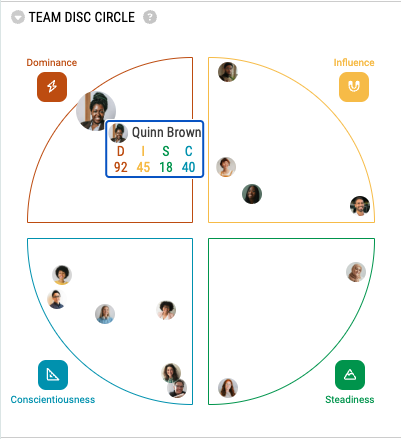
2. Principles: Guiding Leadership with Core Values
Principles are the core beliefs that guide your actions and decisions. These are the enacted values you stand by and use to navigate your leadership journey. For example, principles might include acting with integrity, assuming positive intent, and putting people before productivity.
Why It Matters: Leaders without clearly defined principles often seem reactive and can easily be swayed in their decision-making process. When leaders define their principles and communicate them to others, the team tends to see consistency and reliability, which increases trust and makes it easier for them to work effectively with their leader.
3. System: Establishing Structured Routines and Practices
System refers to the structured routines and practices you implement as a leader. It involves creating and maintaining processes that ensure effective team management, such as regular one-on-one meetings, feedback loops, and performance tracking. A solid system helps you lead your team predictably and efficiently, allowing for better outcomes and a more cohesive team environment.
How Leaders Can Use the APS Method to Help Managers Strengthen Human Skills
The APS Method provides a clear path for leaders to develop their human skills through self-awareness, strong guiding principles, and effective systems. Here’s how you can apply these concepts practically, day-to-day.
1. Applying Self-Awareness in Leadership
Developing self-awareness and awareness of others is crucial for effective leadership. Here are some practical steps:
- Conduct Regular Self-Assessments: Use tools like DISC, Enneagram, or 16 Types to understand your leadership style, strengths, and growth areas. Leveraging multiple assessments gives you a nuanced understanding of yourself and your team, allowing for more informed decision-making and personalized leadership strategies.
- Seek Feedback from Team Members: Regularly gather feedback from those you work with to gain diverse perspectives on how your leadership style impacts others. This input helps identify areas for improvement that you might not see on your own.
- Reflect on Your Responses and Behaviors: Consider how your tendencies influenced recent interactions and what adjustments you might need to make. Use tools like the Reflections feature to regularly assess how your actions and decisions align with your self-awareness insights.
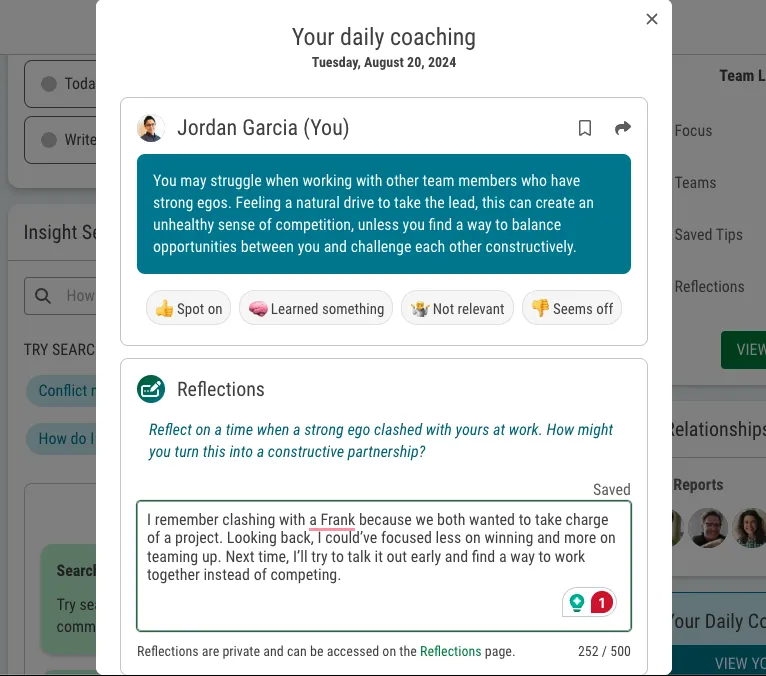
2. Establishing Your Leadership Principles
Leadership principles guide your decisions and actions, ensuring consistency and integrity in your leadership style. Here’s how to define and implement these principles effectively:
- Define Your Core Leadership Values: Begin by identifying the values that are most important to your leadership. Write these values down and think about the principles that best represent them. Consider how you will demonstrate these values in your daily leadership practices—how will your team see and experience these values in action?
- Communicate These Principles to Your Team: Once you’ve defined your principles, clearly communicating them to your team is essential. This ensures that everyone understands the standards you hold yourself to and can align their expectations accordingly.
- Regularly Review and Adapt Your Principles: Leadership is dynamic, and your principles may need to evolve as you and your organization grow. Set aside time to review your leadership principles regularly to ensure they remain relevant and effective. If you find that certain principles need adjustment, be open to making those changes and communicating them to your team.
3. Developing Your Leadership System
Creating a leadership system is about establishing routines and practices that reinforce your principles and self-awareness. This system should be flexible, allowing you to adapt as you grow and as your team’s needs evolve.
Here are three simple ways to build and maintain your leadership system:
1. Establish Regular Routines and Check-Ins
- Create Consistent Check-Ins: Schedule regular one-on-one meetings with your team members. These meetings provide opportunities to discuss progress, challenges, and development goals. Consistency in these check-ins helps build trust and ensures that your team feels supported.
- Set Up Feedback Loops: Implement a structured feedback system that includes both giving and receiving feedback. This system should encourage open communication and ensure timely and constructive feedback. Regular feedback helps identify areas for improvement and fosters a continuous growth culture.
2. Monitor and Adjust Your System
- Track Performance and Progress: Implement performance-tracking mechanisms to monitor how well your leadership practices work. Use tools and metrics to assess whether your routines and practices are helping you achieve your leadership goals.
- Reflect and Adjust: Regularly reflect on the effectiveness of your leadership system. Consider whether your routines produce the desired outcomes and adjust as needed. This reflection ensures that your system evolves with your leadership journey.
3. Document Your Leadership System
- Create a Leadership Playbook: Document your leadership system, including your routines, principles, and feedback processes. This playbook serves as a reference for yourself and can be shared with others in leadership roles to ensure consistency across the organization.
- Regularly Update Your Documentation: Keep your documentation updated as your leadership practices evolve. This living document will help you stay aligned with your goals and ensure that your leadership approach remains relevant and effective.
A Strategic Path to Leadership Excellence
By focusing on the three pillars of the APS Method—Awareness, Principles, and System—leaders can adopt a proactive, reflective, and systematic approach to developing human skills. This not only leads to sustainable results and continuous improvement but also cultivates a leadership culture that thrives on growth and adaptability.
The importance of developing human skills cannot be overstated. The downfall of technically proficient yet emotionally unaware leaders highlights the need for a balanced approach that marries technical expertise with strong interpersonal skills. These skills are not merely complementary; they are essential for navigating the complexities of modern leadership.
A Dual Approach for Lasting Impact
Adopting both a top-down and bottom-up approach to building human skills enables organizations to create a cohesive leadership culture that aligns with their core values while empowering individual leaders on their personal growth journeys. This dual strategy ensures that leadership development is holistic, addressing both organizational alignment and individual capabilities.
The APS Method offers a practical, actionable framework for managers to cultivate the essential human skills that define effective leadership. By integrating self-awareness, clearly defined principles, and structured systems into daily practice, leaders can ensure that their growth is consistent and deeply embedded in their leadership style.
Moving Forward: Building a Thriving Leadership Culture
Investing in developing leadership competencies is not just a preventive measure against leadership failures; it’s a strategic move to nurture an environment where leaders and their teams can thrive. This investment pays dividends in the form of resilient, adaptable teams that are capable of driving the organization forward in an ever-changing landscape.
As you reflect on the concepts discussed, consider how you can begin to apply the APS Method within your own leadership context. Start by assessing where you currently stand regarding self-awareness, principles, and systems. Then, take concrete steps to enhance these areas, using the tools and strategies provided. The journey towards leadership excellence is continuous, but with the APS Method and tools like Automated Coaching, you have a clear path to follow.
Every day, you and your team navigate the complexities of training. It’s challenging because scheduling workshops or other designated times for learning pull employees away from their work.
The reality is that our brains struggle to retain information from one-time sessions, conversations, or readings. Despite our best efforts, most of what is learned in these settings is quickly forgotten. This isn’t due to a lack of engagement or interest; it’s simply how our brains function.
For learning to truly stick and be applied effectively in the right situations, continuous reinforcement is essential. However, Talent Development professionals can’t be present in every situation to ensure concepts are reinforced. Managers often lack the tools and expertise to effectively embed these learnings into daily work routines. This gap highlights the need for a new approach to development—one that integrates learning seamlessly into the flow of work, providing ongoing, relevant reinforcement exactly when it’s needed.
What if learning didn’t require stepping away from work but instead enhanced it? People need insights and development opportunities to appear organically within their workflow so that learning is continuous, contextual, and immediately relevant. This approach not only respects the demands on your team’s time but also ensures that development is a natural part of their daily routine.
Why should productivity and personal development compete? In this article, we’ll explore the possibility of integrating learning into daily activities to help resolve the tension that can arise between prioritizing productivity and development.

The Development/Productivity Paradox
The Challenges of Traditional Learning Methods
The Old Way Isn’t Working: 4 Common Pitfalls of Traditional Learning Strategies Traditional learning methods often fail to deliver sustainable results for several reasons. Workshops and training sessions, while well-intentioned, pull employees away from their daily tasks, creating disruption and information overload.- Disruption of Workflow: Scheduled sessions interrupt the flow of daily work, causing productivity dips and backlog. This disruption makes it challenging for employees to balance their work responsibilities with learning commitments.
- Information Overload: Large volumes of information delivered in a short period can overwhelm employees, leading to poor retention. Studies show that within one hour, learners forget an average of 50% of the information presented; within 24 hours, they forget 70%, and within a week, they forget up to 90% (Bridge) (Indegene).
- One-Size-Fits-All Approach: Generic training content, normally only specific to roles often fails to address the specific needs and contexts of individual employees. This lack of personalization reduces the effectiveness of learning interventions.
- Lack of Continuous Reinforcement: Without ongoing support, the skills and knowledge gained in one-time sessions quickly fade. Continuous reinforcement is essential for retention and application of new skills.
What Do These Gaps Mean
- Retention Rates: According to research, learners forget approximately 70% of new information within 24 hours and 90% within a week without reinforcement (Indegene). This highlights the need for continuous learning strategies to ensure knowledge retention.
- Engagement Levels: A LinkedIn Learning report found that 58% of employees prefer to learn at their own pace and on-demand, rather than in structured, time-bound sessions (SHIFT). This preference indicates a need for more flexible and personalized learning solutions.
- Impact of Microlearning: Microlearning, which delivers content in short, focused bursts, has been shown to boost retention rates by 25% to 60%. It also boasts an average completion rate of 82%, making it a highly effective method for engaging learners and improving retention (SHIFT).

HUMAN SKILL PROGRAMS ARE HITTING LIMITATIONS...
- Close the gap between learning and on-the-job application
- Overcome the tension of pausing productivity for development opportunities
- Experience done for you learning in the flow of work
- Stay ahead of human skill development
- Prove the ROI of your talent development programs

What Makes Continuous Learning Effective For An Organization?
3 Components That Make Continuous Learning Possible
1. Ongoing Learning Opportunities:
Learning should not be a one-time event but an ongoing process. Continuous learning opportunities ensure that employees can regularly reinforce and build upon their knowledge and skills. Integrating learning directly into daily tools and routines provides constant reinforcement without disrupting workflow.
- Example: Imagine a project manager receiving daily insights not just on generic leadership skills but specific, personalized guidance on how to best collaborate with individual team members based on their unique personalities and work styles. For instance, they might receive a tip about leveraging the analytical skills of a detail-oriented team member during a planning meeting.
2. Personalized, Contextual Insights:
Providing insights tailored to individual needs and specific situations helps ensure that the learning is relevant and immediately applicable. Personalized coaching can address unique challenges and leverage individual strengths. Cloverleaf’s Automated Coaching™ delivers personalized, context-specific tips that are tailored to the unique psychology and interactions of each user.
- Example: Imagine a team lead receiving real-time, personalized advice on how to approach a one-on-one meeting with a particular team member. The coaching might suggest ways to motivate that team member based on their personality type, such as recognizing their achievements in a way that aligns with their need for validation.
3. Integration with Daily Tools:
By embedding learning into tools that employees already use the development process becomes a seamless part of their daily workflow. This integration minimizes disruption and maximizes the relevance and impact of the learning.
- Example: Consider a team receiving coaching tips and developmental insights directly in their workplace tools. For instance, a Slack notification might suggest adjusting communication approaches for an upcoming meeting with a team member who prefers concise, data-driven discussions.

Making Learning In Context A Reality
At Cloverleaf, we’ve redefined continuous learning in the flow of work with Automated Coaching™. Here’s how we excel:
- Seamless Integration: Learning is embedded into the tools you already use, ensuring a smooth, disruption-free experience.
- Real-Time Insights: Receive tailored coaching precisely when you need it, aligned with your specific tasks and interactions.
- Engaging Microlearning: Continuous, bite-sized learning opportunities keep you engaged and enhance retention without overwhelming you.
Automated Coaching Outperforms Traditional Learning Approaches
Maximizing the Impact of Contextual Learning
- Improved Retention and Application: Ongoing, in-the-moment learning ensures skills are retained and immediately applied.
- Scalable and Inclusive: Personalized coaching is available to all employees, promoting equal development opportunities across the organization.
- Proven Impact: Trackable data showcases the tangible improvements in performance and ROI, validating the effectiveness of development initiatives.
Why We Believe Context Makes Continuous Learning Meaningful
At Cloverleaf, our commitment to learning in context is deeply rooted in rigorous research and continuous improvement. Here’s how our studies support this innovative approach:
Research and Commitment to Continuous Improvement
We recently conducted an analysis involving over 100 employees across 12 organizations, focusing on the impact of Automated Coaching™ on team communication and collaboration. The study revealed a 31% increase in these scores after just three months, demonstrating the effectiveness of contextual learning.
Further research with a client showed that engagement with our platform led to an 18% increase in employees feeling their skills were valued, a 36% increase in feeling recognized by team members, and a 36% improvement in perceived teamwork quality. These results underscore how embedding learning into daily workflows enhances both individual and team performance.
In a daily trends analysis, employees who engaged with Cloverleaf showed increased self-awareness and relational energy. This engagement resulted in more stamina, willingness to tackle new challenges, and higher quality teamwork, indicating that learning in context promotes continuous personal and professional growth.
Our qualitative interviews, validated by a global team of PhDs, highlight that users trust Automated Coaching™ for its unbiased, comprehensive insights. This trust facilitates significant improvements in self- and others-awareness, which are crucial for effective communication and collaboration within teams.
Development and Productivity No Longer Need To Compete
Key Takeaways:
- Embedded Learning: Development opportunities should fit seamlessly into the tools and routines that employees already use, minimizing disruption and making learning directly applicable.
- Continuous Reinforcement: Learning should be an ongoing process with regular reminders and tips to help people retain and apply new knowledge.
- Personalized Insights: Providing real-time, tailored insights makes learning more effective and relevant to each person’s specific situation.
- Scalability and Accessibility: Using technology like Automated Coaching™ allows us to offer coaching and development to everyone in the organization, not just a select few.
In this new era, we need a more scalable and “sticky” way to elevate collaboration across our organizations. It’s imperative. Collaboration is already making or breaking projects and organizations, and with the increasing pace of work, the need for effective collaboration is only growing. We must change our tactics to achieve consistently high-quality collaboration, or our personal and collective success—and wellbeing—will suffer.
Organizations face numerous challenges in this area. By and large, they don’t define, measure, or invest in collaboration effectively. While the term is often used, real investment and measurement reveal a wide variety of gaps. Collaboration, cross-functional teamwork, and related skills are rarely trained for or measured. When training does occur, it’s usually focused on individuals, typically leaders, who are then expected to apply these skills in teams that lack similar training. This siloed approach, if it exists at all, often falls short.
Investing in the quality of collaboration is often relegated to the category of “soft skills,” implying it’s less valuable. This perception persists because the industry hasn’t cracked the code on measuring collaboration effectively and proving its connection to profits. However, focusing on human skills like communication, empathy, and teamwork can transform the way organizations operate. By embedding these skills into daily practices, organizations can strengthen trust, innovation, and agility, ultimately turning human skills into a competitive advantage.
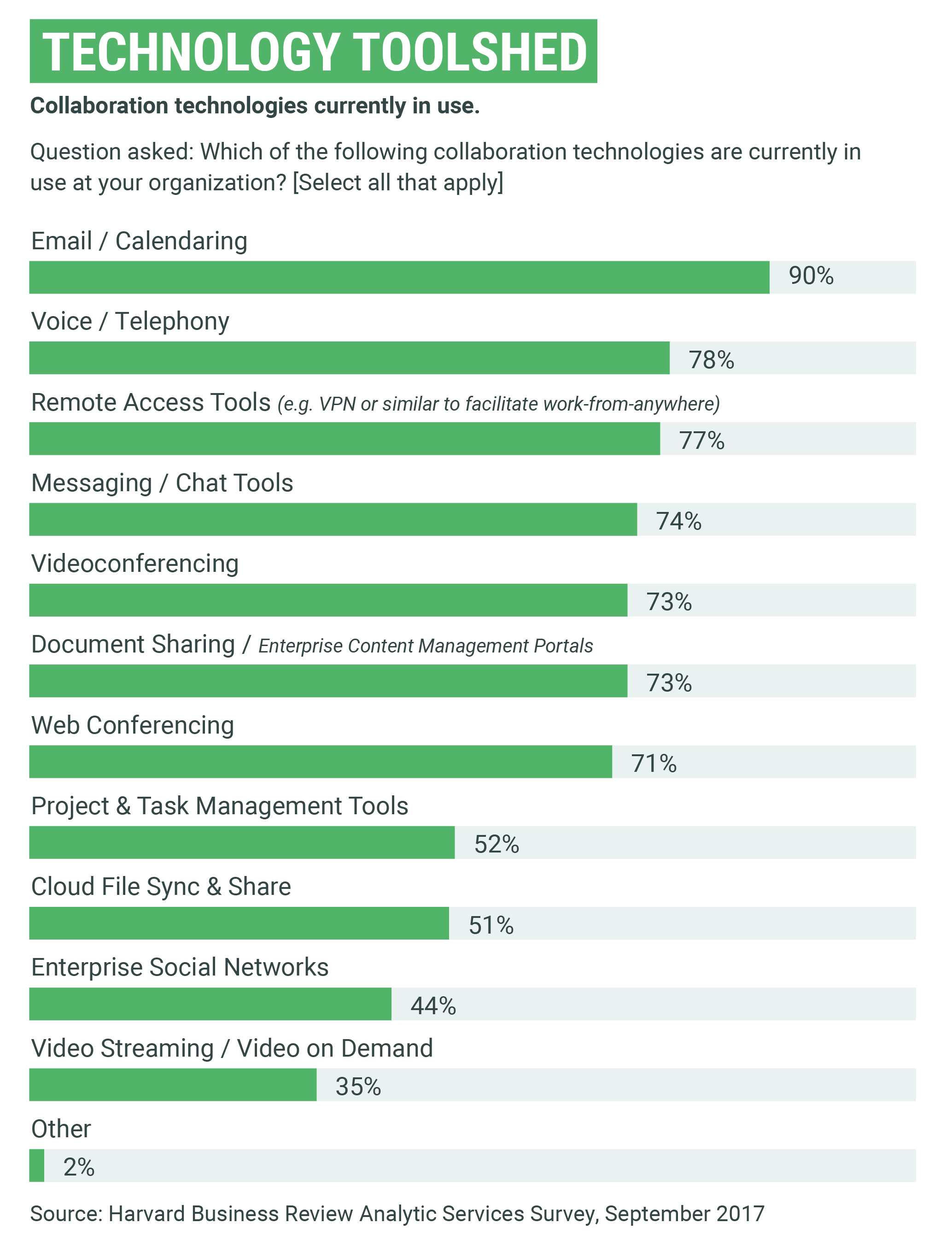
The Limitations of Traditional "Collaboration Tools"
In the broader technology market, many products are labeled as “collaboration tools.” However, these tools are mostly just communication or productivity tools. Few, if any, of the software tools currently classified as collaboration actually focus on the human (behavioral) element of collaboration.
Simply providing another channel to communicate doesn’t necessarily improve collaboration. In fact, it can often be a barrier by introducing confusion about where and how to communicate with each other. More channels can be more confusing if there isn’t a shared understanding of which channels to use and when. This often leaves people questioning where to expect a response from teammates. Email, Slack, or text? No one knows.
This Harvard Business Review survey found that while organizations use various tools to share words and files, these tools often fail to enhance true collaborative efforts. The survey revealed that while communication tools facilitate message exchange, they do not necessarily improve the effectiveness of these messages to create shared understanding and meaningful collaboration. We have too many ways to transfer messages and not enough support to build true relationships and quality communication.
We need new tools and approaches that address the work humans do to navigate our differences and achieve outcomes that build true value for the organizations we serve.

HUMAN SKILL PROGRAMS ARE HITTING LIMITATIONS...
- Close the widening gap between learning and on-the-job application
- Overcome the tension of pausing productivity for development opportunities
- Integrate learning so it is actually in the flow of work
- The evolution of human skill development
- What Automated Coaching™ is and how it works.

Growing Collaboration Beyond Communication Tools
- Overwhelming Channels: Multiple communication platforms can lead to confusion about where to communicate.
- Lack of Focus on Relationships: Effective collaboration requires tools that foster understanding and relationships, not just message exchanges.
- Missing the Behavioral Aspect: True collaboration involves navigating human behaviors and differences, which current tools do not adequately support.
The Need for Human-Centered Collaboration Tools
To truly improve collaboration, we need tools that:
1. Facilitate Understanding: Tools should help team members understand each other’s strengths, communication styles, and working preferences right in the flow of work. (Josh Bersin).
2. Build Relationships: Effective collaboration tools should focus on relationship-building and trust. (mckinsey.com)
3. Support Behavioral Changes: Tools should provide insights and nudges that help teams navigate differences and improve their collaborative efforts. Continuous learning and development platforms that offer real-time coaching and feedback can drive sustained behavioral change to improve collaboration.
Shifting the focus from mere communication to understanding and relationship-building, organizations can unlock the true potential of collaboration.
The Misnomer Of “Soft Skills“
Unfortunately, what we’re talking about here is often lumped into a broader category in the organizational context referred to as “soft skills.” This is a really annoying moniker on many levels for those of us who have dedicated our lives to improving people and organizational effectiveness. The word “soft” would seem to imply that it’s less necessary or less relevant than hard skills like software development or financial forecasting. This is also why many in talent management circles have started referring to these soft skills as “human skills”—an even more appropriate moniker in an era of artificial intelligence.
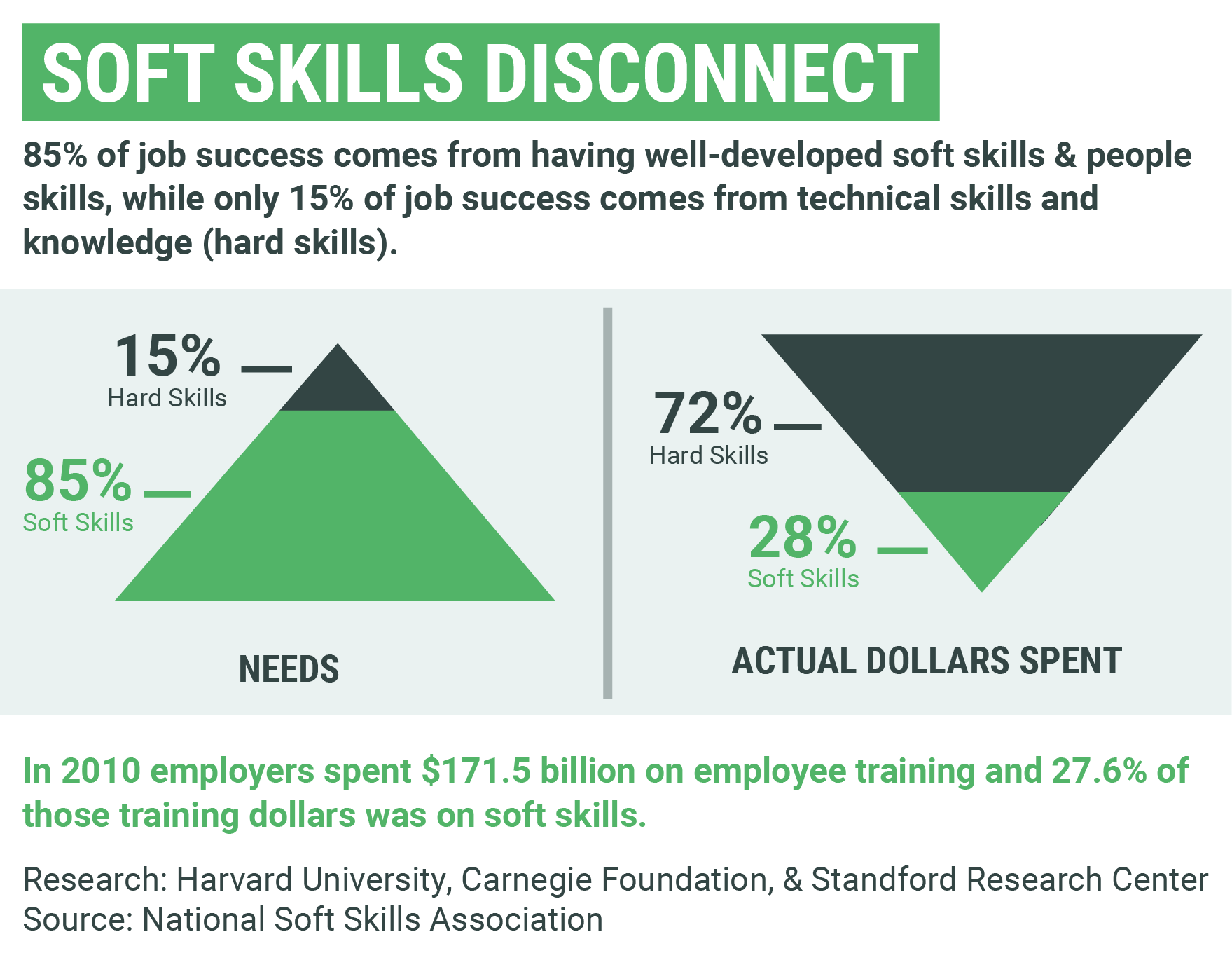
The Value of Human Skills
CFOs often like to gloss over these investments in soft skill training as frivolous and the most expendable when budget cuts are necessary. This disconnect is illustrated clearly when we examine where we are investing our talent development dollars versus what the organization and its leaders identify as the most critical skills for business success.
Despite the pervasive influence of Artificial Intelligence (AI) tools, human skills are the least likely to be displaced or replaced by AI. These skills offer exponential returns on investment compared to the incremental returns of most hard skills. For instance, learning how to use Excel better or adopting a new sales technique might improve efficiency marginally. However, understanding your teammates’ unique strengths can help avoid unnecessary conflicts and navigate differences toward significantly higher performance.
The Return on Investment (ROI) of Human Skills:
- Conflict Avoidance and Performance: A better understanding of human skills can help teams avoid conflicts and work more harmoniously, leading to higher productivity and better results.
- Market Relevance: Insights into human skills can guide the development of products and services that better meet customer needs, enhancing market success.
- Enhanced Customer Interactions: Skills in empathy, communication, and problem-solving improve customer support and sales effectiveness.
3 Challenges of Measuring Human Skills Impact
The disconnect between the investment in development dollars and the types of skills that have an outsized impact on performance boils down to measurement issues.
Challenges in Measuring Collaboration Health:
1. Lack of Standardization: There is no standardized way to measure soft skills across different organizations, making it difficult to benchmark or track progress uniformly.
2. Isolation of Impact: It is challenging to isolate the specific impact of a human skills intervention from other variables that influence performance.
3. Linkage to Financial Success: Drawing a direct and clear line between improvements in human skills and financial metrics like revenue growth or churn rates is complex and often indirect.
Let’s look at each of these in more detail.
1. The Need for Standardized Measurement in Human Skills
When discussing gross margin, businesses can quickly provide a percentage that reflects a standardized calculation. Unfortunately, such standardization for human skills and collaboration metrics is lacking. While we can measure turnover and engagement, how do we quantify collaboration, psychological safety, trust, or leadership?
Measuring Human Capital: SEC’s Steps
The SEC has recognized this gap. On August 26, 2020, they mandated that companies disclose their human capital resources in quarterly and annual reports. This includes any human capital measures or objectives that are key to managing the business.
Trends in Human Capital Reporting
Gibson Dunn’s study on the S&P 500’s compliance reveals significant variability in disclosures:
- Disclosures ranged from 109 to 1,995 words, averaging 960 words.
- 25% of companies avoided quantitative metrics, and 10% included only headcount numbers.
- Significant increases in disclosures on talent attraction, retention, compensation, diversity, health, and pay equity were noted.
There is no standardization in human capital metrics across companies. This variability underscores a lack of understanding of the value human skills bring to organizational success.
The SEC’s requirements are a start, pushing us towards more transparency and investment in people. International standards like ISO 30414 offer some guidance but remain voluntary.
By moving towards standardized measurements for human skills, organizations can better align investments with the factors that drive success, ultimately gaining more actionable insights into their most valuable assets: their people.
2. Isolating the Impact of an Intervention
Organizations invest $350 billion annually in learning and development (L&D) across various interventions, including online courses, in-person training, assessments, coaching, and more. How do we measure the impact of these development opportunities?
Consider an employee named Raj, who improved his performance after participating in multiple programs and moving to a new team with a new manager. How can we determine whether his performance boost was due to the training, the new team, or the new manager?
Current Measurement Practices: Many L&D leaders rely on surveys to gauge effectiveness:
- Surveys ask if the training was helpful.
- Surveys ask if managers are effective.
- Surveys ask if employees feel they have access to needed development programs.
Limitations of Surveys
- Sentiment vs. Metrics: Surveys measure feelings, not direct ties to business metrics like revenue or turnover.
- Survey Fatigue: People are tired of surveys, leading to low completion rates.
- Time-Based Approach: Pre- and post-intervention surveys measure short-term changes, but it’s hard to ensure lasting impact. Studies show that most training knowledge is forgotten within a week.
How can you know if someone’s behavior change will stick? Study after study shows that people forget most of what they learn in training courses within a week. How can development professionals truly measure if their programs create lasting change for months and years?
3. Linking Investments to Financial Success
How do investments in people translate into financial success? While studies show that companies investing in salary, benefits, or L&D are more productive, proving a direct link is tough.
How do investments in people translate into financial success? While studies show that companies investing in salary, benefits, or L&D are more productive, proving a direct link is tough. Demonstrating the ROI of collaboration is even harder. Before Organizational Network Analysis (ONA), quantifying collaborative activity was nearly impossible. Now, tools like Microsoft 365, Google Suite, Slack, Salesforce, and GitHub generate vast data showing who is connecting and communicating within teams.
ONA can identify key connectors, highlight areas of isolation, and pinpoint communication breakdowns. However, it still doesn’t easily link these activities to financial metrics. It measures communication quantity, not quality. High volumes might indicate miscommunication, gossip, productive brainstorming, disengagement, or efficient alignment.
Organizational Development leaders face challenges in proving the impact of leadership programs on emotional intelligence and psychological safety, which are crucial for reducing turnover, increasing engagement, and accelerating innovation. Surveys can gauge sentiment but often fail to show direct ties to financial outcomes. This gap makes it hard to secure budget approval for development initiatives without leaders’ belief in the value of investing in people.
Unlocking the Potential of Quality Collaboration
Valuable collaboration is under-invested because we think of it in terms of quantity or channels rather than quality. We lack a common language and numerical proof linking it directly to profit. However, effective collaboration leads to profit and enhances the quality of life for employees and customers.
The convergence of macro-trends, SEC requirements for human capital considerations, and technological advancements present an opportunity to empower effective human skill interventions and measure high-quality collaboration’s impact.
The explosion of data and new techniques promises a future where we better understand how collaboration impacts productivity, innovation, and value creation. For now, approaches remain inconsistent across companies and teams.
At Cloverleaf, we have a front-row seat with millions of people in tens of thousands of teams across hundreds of organizations both large and small, for what is working and what is ineffective in collaboration. We built Automated Coaching around proven concepts that work, grounded in decades of research and validated by real-world applications, resulting in quality collaboration, value creation, and life-changing outcomes. To see Cloverleaf in action or schedule a demo, click here.
As the curtain falls on 2023...
…we step into the new year, we are delighted to present a reflection on the chapters, wins, and more that made our 2023.
WE'RE GROWING!
111,583 NEW PEOPLE JOINED CLOVERLEAF
With this year’s additions, it brings our total Cloverleaf-er count to 1,303,392, with people from 171 countries all over the world coming together to learn more about themselves and their teammates! 🌎


SHARING THE LOVE.
OVER 107,615 INVITES SENT.
You were committed to coaching by example by ensuring others always had a seat at your table. 💌
COACHING WHEN YOU NEED IT.
38,507,959 INSIGHTS SENT
Successful coaching happens when you see what could be rather than just what is. You received 38,507,959 insights this year, with an average helpful rating of 92.51%, showing us your tips resonated with you repeatedly! 👍


WE 💚 COACHING & COFFEE.
2,190 GALLONS OF COFFEE CONSUMED
While all this was happening, we checked, and Cloverleaf employees drank over 768 oz or 6 Gallons of coffee daily, keeping things running behind the scenes; that’s 2,190 gallons of coffee consumed for the whole of 2023! It was more than worth it, though, and we at Cloverleaf would like to thank you for an amazing year. ☕
Your dedication and enthusiasm for personal and team development truly made it a standout year. We’re immensely grateful for the trust you’ve placed in us. Our team is hard at work crafting innovative solutions to give you an even more rewarding coaching experience this year. Thank you for choosing Cloverleaf, and we look forward to achieving new heights together!
2023 was an incredible year of coaching.

HUMAN SKILL PROGRAMS ARE HITTING LIMITATIONS...
- Close the widening gap between learning and on-the-job application
- Overcome the tension of pausing productivity for development opportunities
- Integrate learning so it is actually in the flow of work
- The evolution of human skill development
- What Automated Coaching™ is and how it works.

